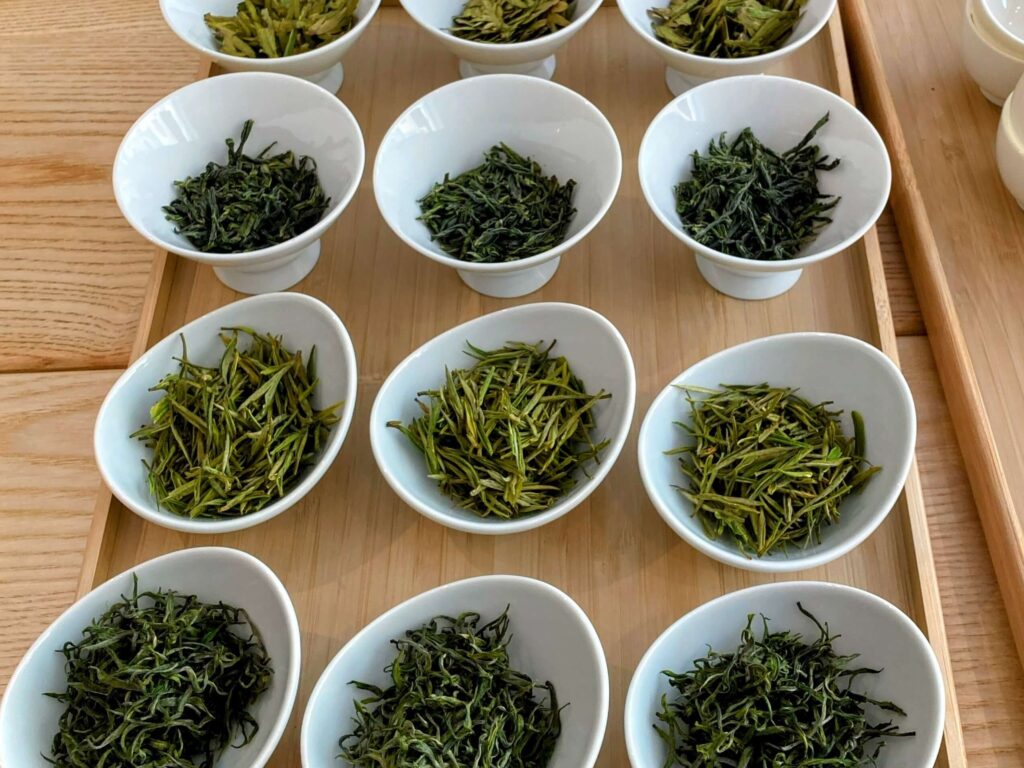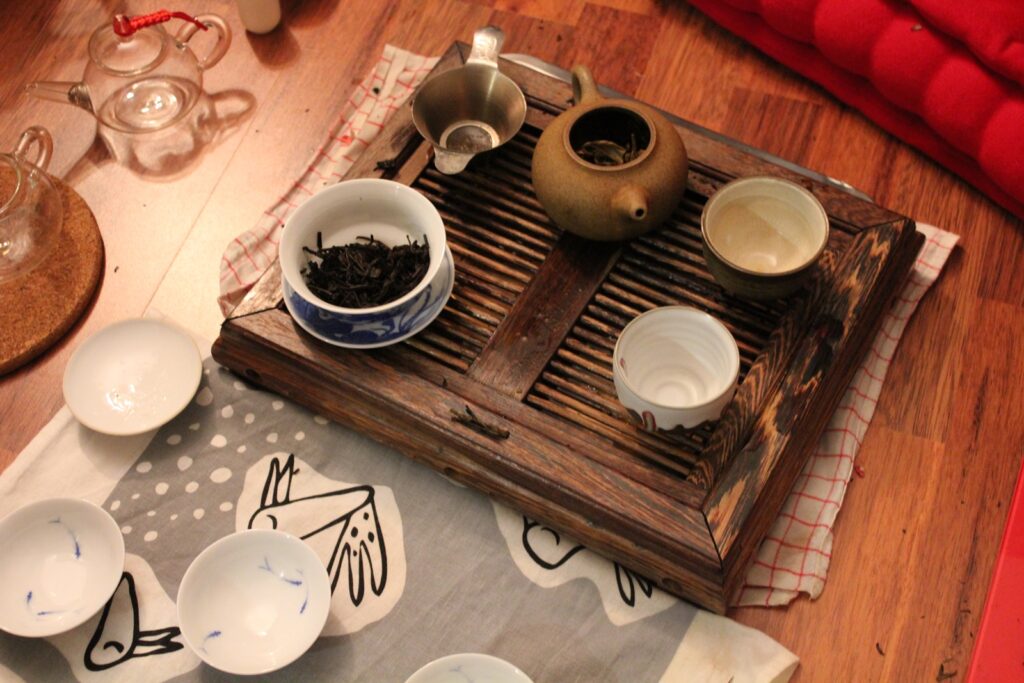Last week, I headed back to Muyo teahouse and culture space for a tea tasting hosted by TeeMaa. This time, we were exploring the new harvest of Chinese first flush green teas.
China’s Famous Green Teas
Before diving into our tasting, Xinyuan gave an overview of China’s tea production. It’s no surprise that green tea makes up 60% of China’s total tea production, coming in at almost 1.85 million metric tons.
We also learned about China’s 10 most famous teas, seven of which are green teas:
- Bi Luo Chun 碧螺春
- Xin Yang Mao Jian 信阳毛尖
- Xi Hu Long Jing 西湖龙井
- Liu An Gua Pian 六安瓜片
- Huang Shan Mao Feng 黄山毛峰
- Du Yun Mao Jian 都匀毛尖
- Tai Ping Hou Kui 太平猴魁
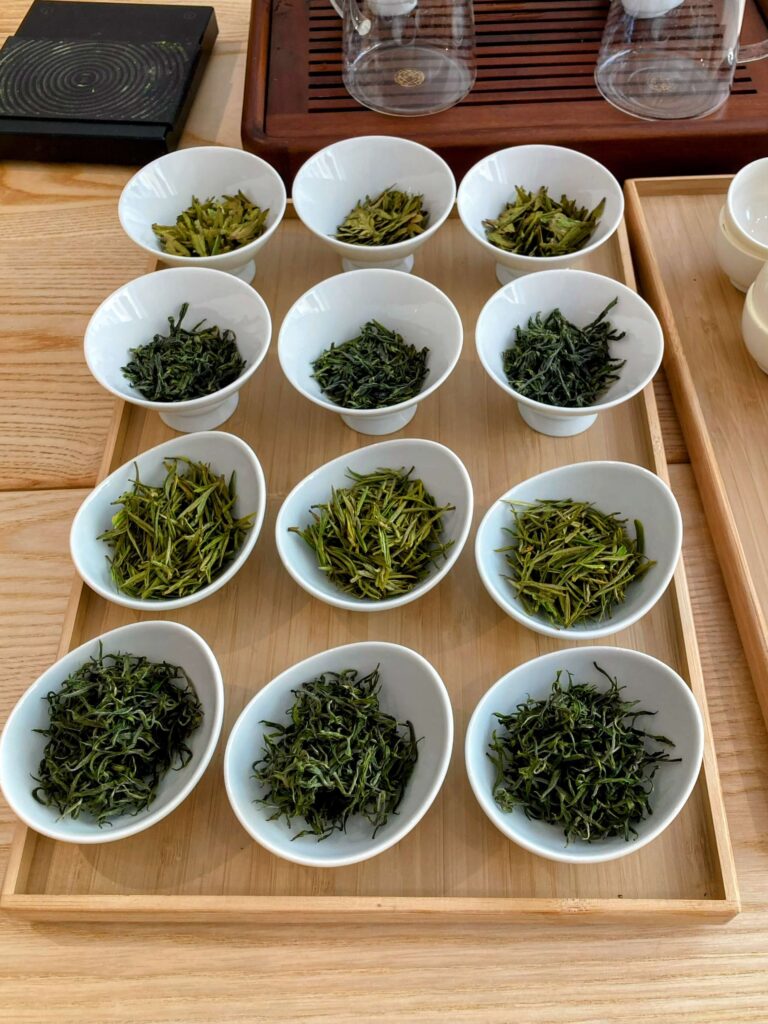
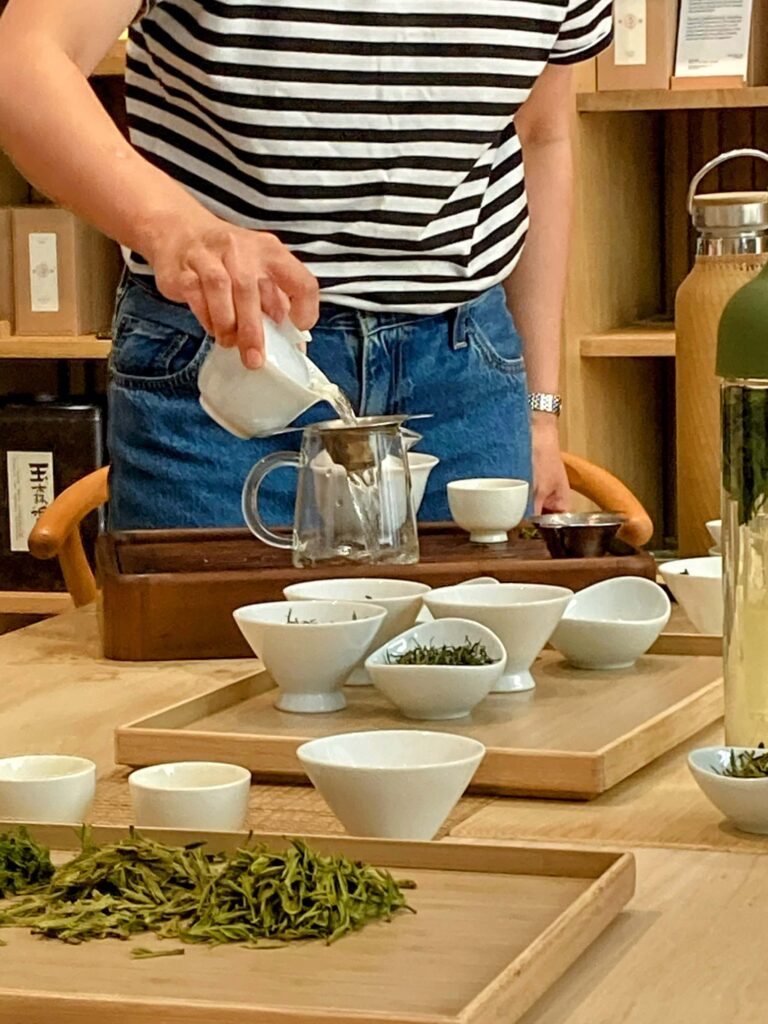
Understanding Green Tea Processing
There are hundreds, if not thousands, of different green teas. The sheer variety comes down to differences in geography, climate, regional variations, cultivation methods, and processing methods. The critical step for producing green tea is known as “Sha Qing” (杀青), which means “killing the green”. In actual fact this step keeps the green! It’s the process that stops oxidation and preserves the green colour. The main methods are:
- Steaming – the oldest method, dating back to the Tang Dynasty (618 to 907)
- Pan frying – starting in the Ming Dynasty (1368 to 1644), now the most common method
- Roasting – used for teas like Huang Shan Mao Feng and Tai Ping Hou Kui
- Sun-baking – for final drying of mature leaves and tea bricks
Green Tea Tasting
All our teas today were early harvest teas, picked when the leaves are young and tender, which is when green teas are at their most prized. The brewing method was consistent across all teas: 5g of tea leaves, water at 85°C with infusions of 15 seconds (1st infusion), 15 seconds (2nd infusion), then 1 minute (3rd infusion, a longer steep to push the limits!).
Liu An Gua Pian 六安瓜片 (Melon Seed)
First up was Liu An Gua Pian, and what a delightful way to start! This tea is quite unique among green teas because it uses fully matured leaves rather than buds. It’s grown in Da Bie Mountain Liu An area of Anhui province.
Our teamaster, Peng, mentioned this makes an excellent cold brew, which is perfect for refreshing summer sipping. When we brewed it hot, the progression through the three infusions was lovely. The first cup was beautifully vegetal, the second brought out lovely toasty aromas with that pleasant long finish that kept developing, and by the third infusion, we were getting more of that vegetal character with just a hint of bitterness creeping in.
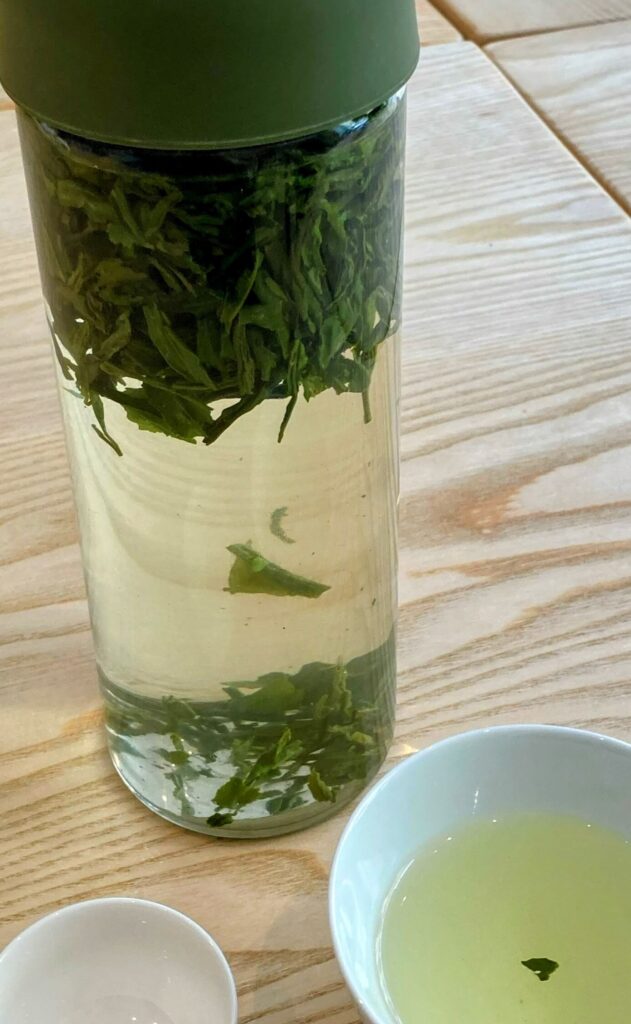
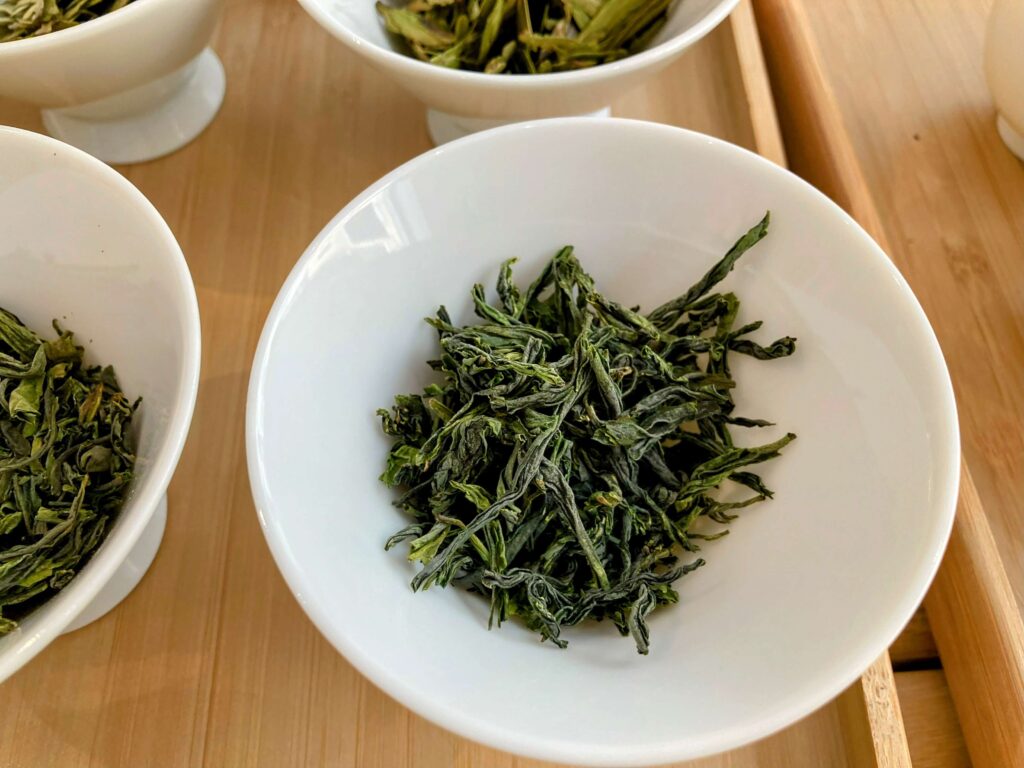

Long Jing 龙井 (Dragon Well)
Long Jing is probably China’s most famous green tea, and for good reason! It was granted the status of Gong Cha, or imperial tea, by the Emperor during the Qing dynasty. The flat, sword-like shape of the leaves is iconic, created through a special pan-frying technique. It grows in Longjing village, Hangzhou in Zhejiang province.
What struck me immediately was how much toastier this was compared to the Gua Pian. When we warmed the leaves to smell them, everyone had different associations. I got digestive biscuits, Peng smelled toasted soybeans, and another person was reminded of roasted almond ice cream. It’s funny how we all bring our own cultural memories to tea tasting.


The first infusion was subtle but incredibly tasty – barely any aroma but it coated the whole tongue with this sweet, vegetal, toasty flavour. The second brew was where this tea really shone for me – such a lovely aroma. By the third infusion, you could smell it from across the table, though a slight bitterness was starting to emerge. Fun fact – the dry leaves actually make a tasty crunchy snack!
Huang Jin Cha 黄金茶 (Golden tea)
This was our early harvest tea from Hunan province, made from young leaves and buds. Peng prefers to brew this at 100°C rather than 85°C as she feels it releases more of its flavours this way. The warmed tea leaves gave a lovely sweet aroma.
The first infusion revealed lots of beautiful fresh flavours – vegetal like the others, but with a courgette-like quality and a sweetness that reminded me of young, early sweetpeas. A really interesting thick tea that continued to develop through the infusions.

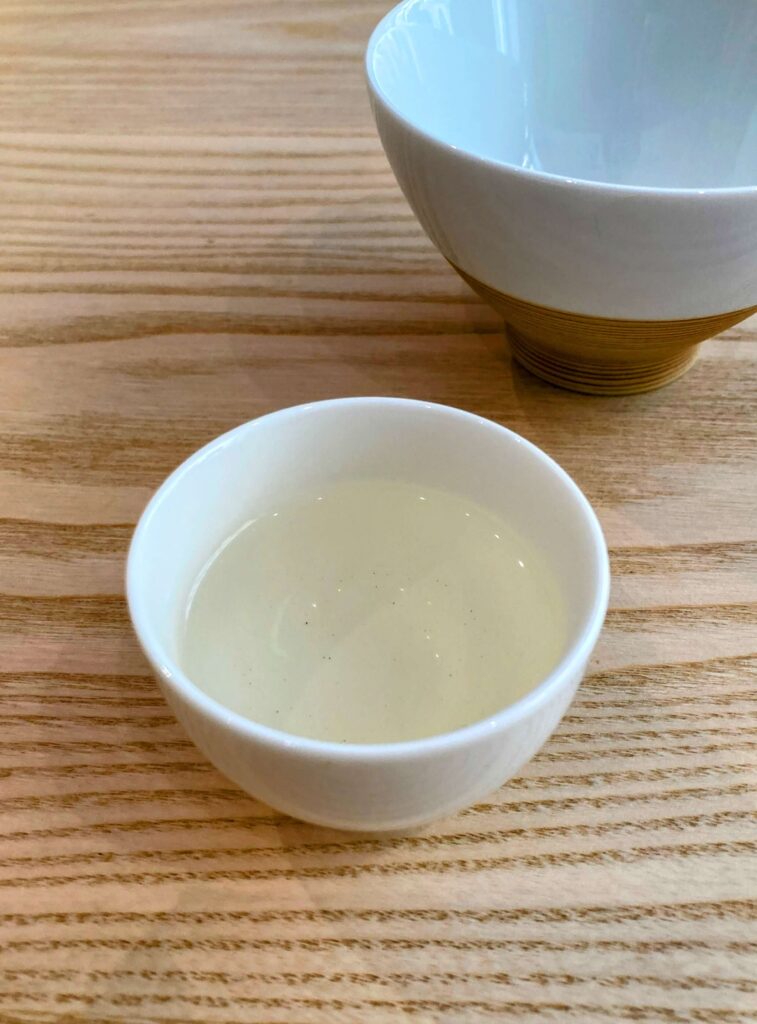
Anji Bai Cha 安吉白茶 (Anji White tea)
Despite its name meaning “white tea,” this is actually a green tea! This was probably the most delicate of all our teas today, with a very light aroma and gentle sweet and vegetal taste. It’s the kind of tea that whispers, requiring attention to appreciate its subtle charms. I don’t think I was able to do it justice at the tail end of our tasting.
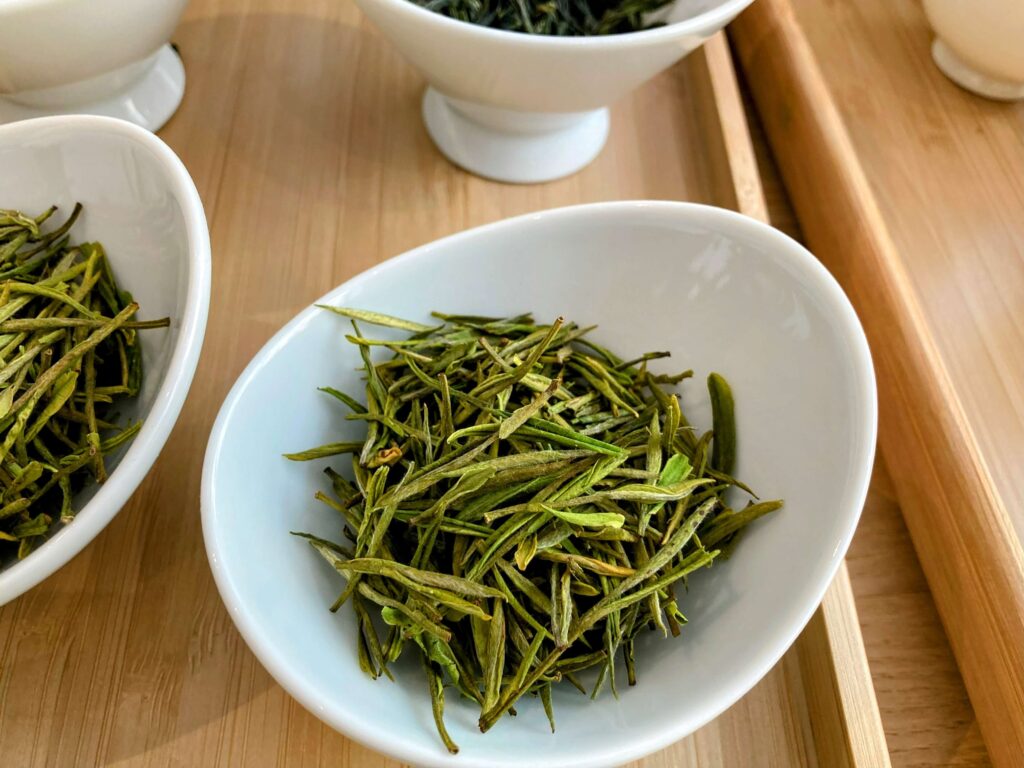

Tai Ping Hou Kui 太平猴魁 (Taiping Monkey King)
Our final tea was the famous “Monkey King” tea, another one of China’s top 10 teas, hailing from Anhui province. Probably the most distinctive-looking tea with its long, broad, flattened leaves that won’t fit in any tea brewing receptacle! I remember being fascinated with Tai Ping Hou Kui when I first discovered it during my time living in China as I had never seen any tea like it.
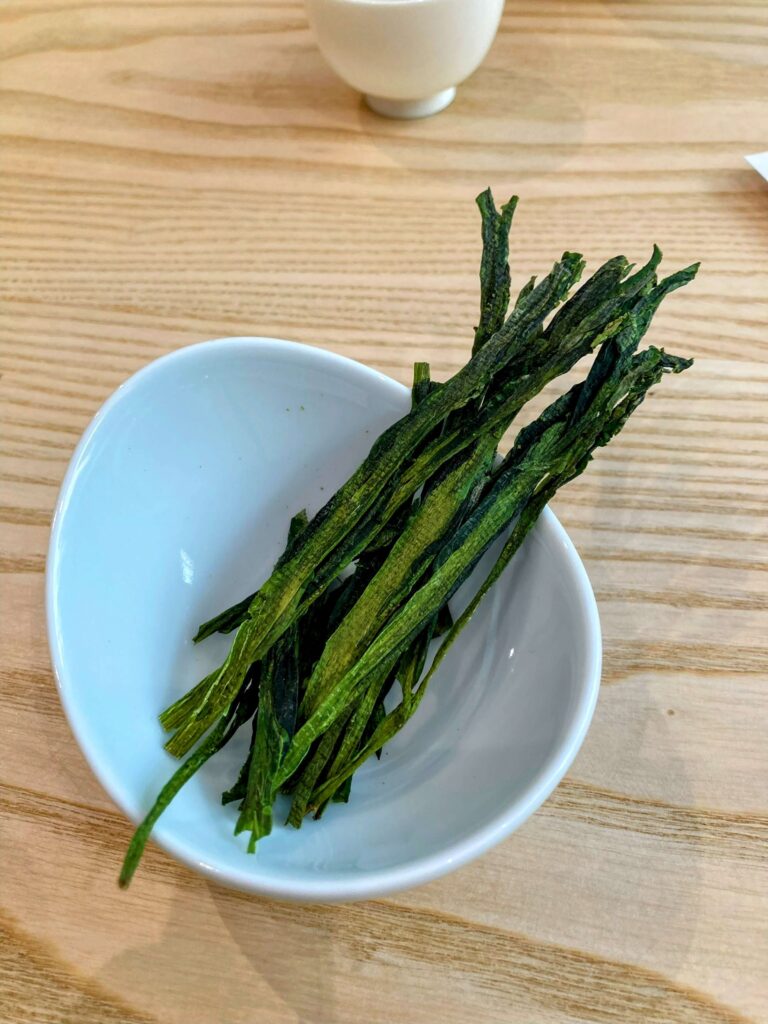
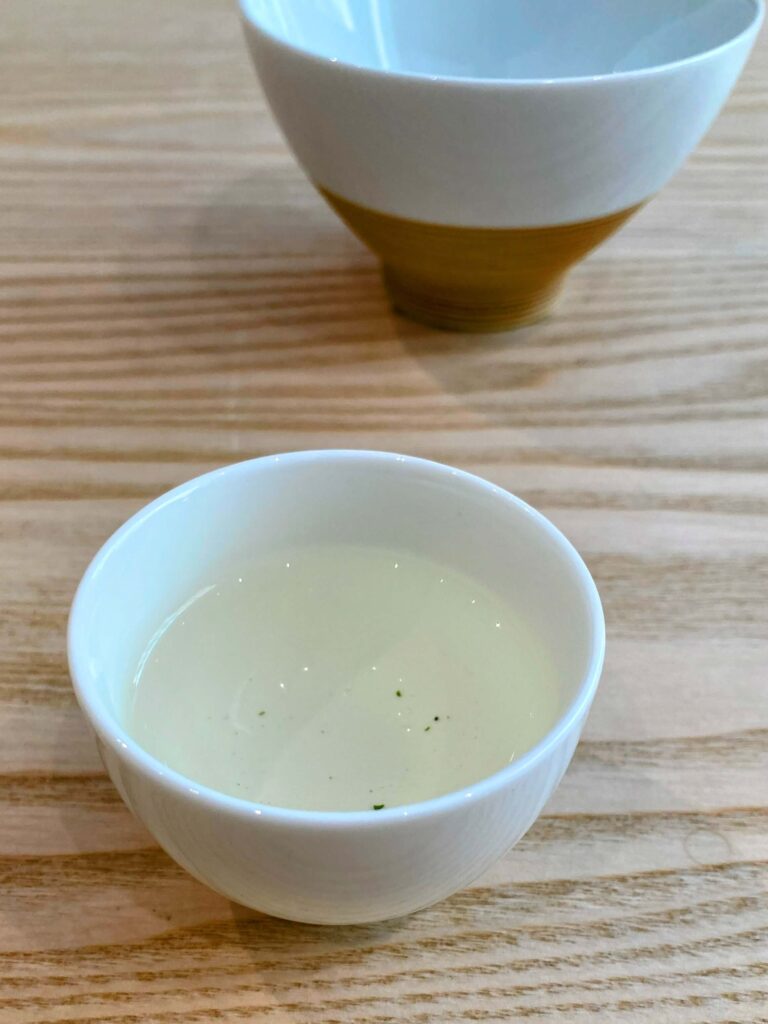
When brewed, it gives a beautiful, sweet aroma. Though my taste buds were a bit overworked by this point, I could still get the refreshing, mellow and sweet flavour that lingers afterwards.
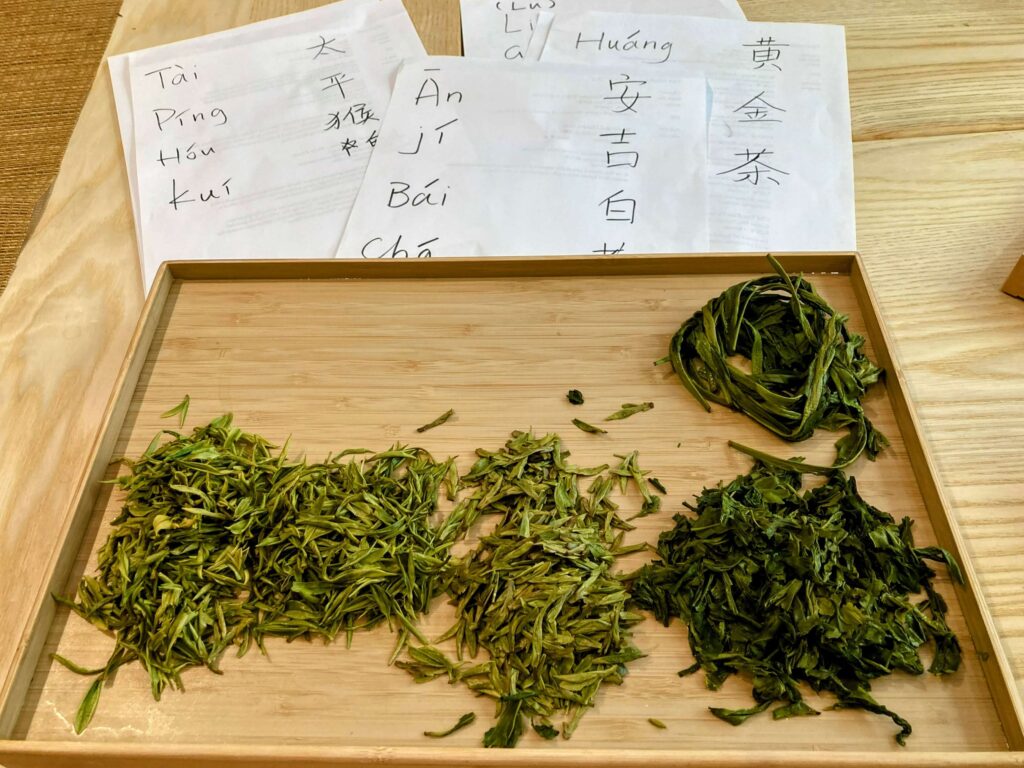
Leicha Porridge
One of the highlights of the afternoon was trying Peng’s homemade Leicha porridge – a traditional dish that is typically eaten in the afternoon in her home province of Hunan. It’s made with rice, peanuts, and ginger with either salt or sugar added, as well as tea leaves sprinkled on the top. A simple, comforting dish to end our afternoon’s tasting of new harvest Chinese green teas.
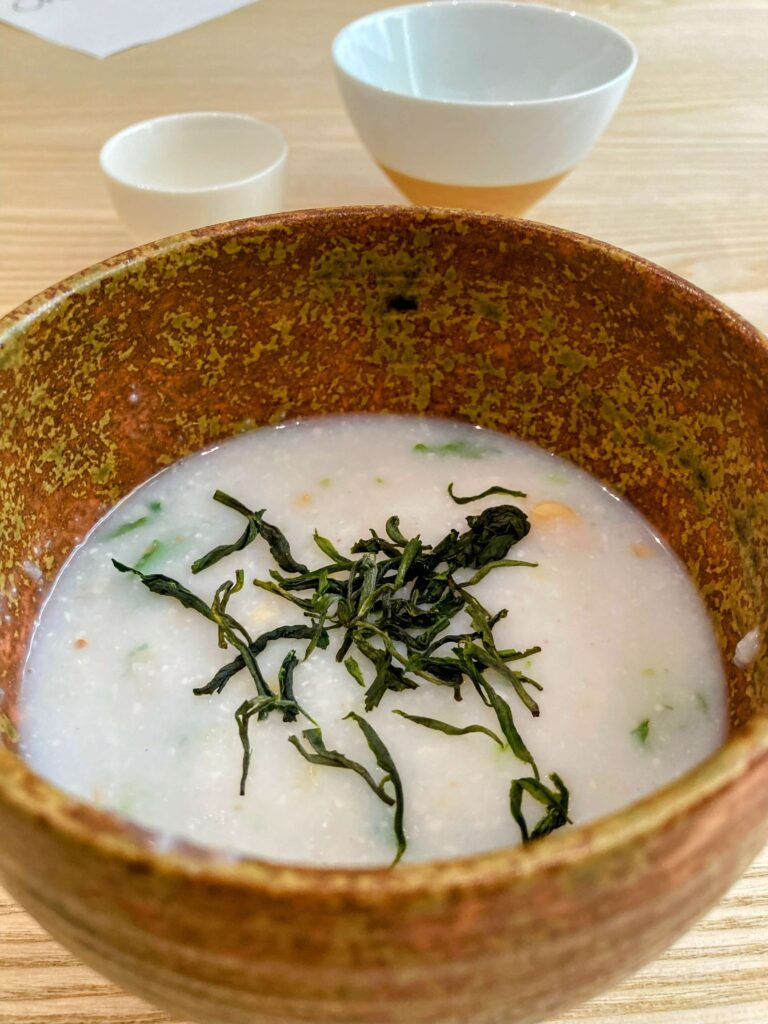
Have you tried any of these famous Chinese green teas? Or perhaps you’ve encountered Leicha in your own tea adventures? I’d love to hear about your experiences in the comments below!


